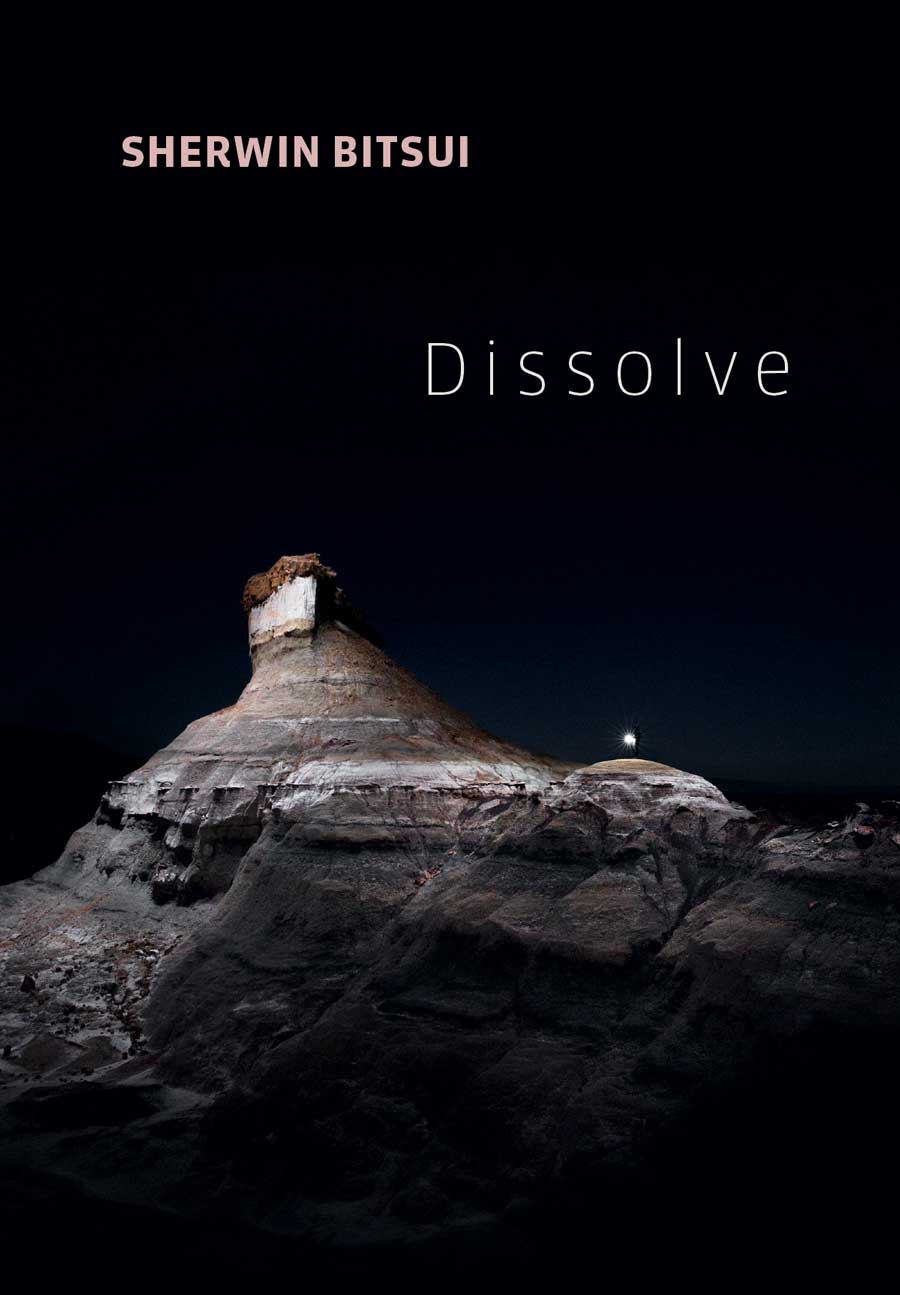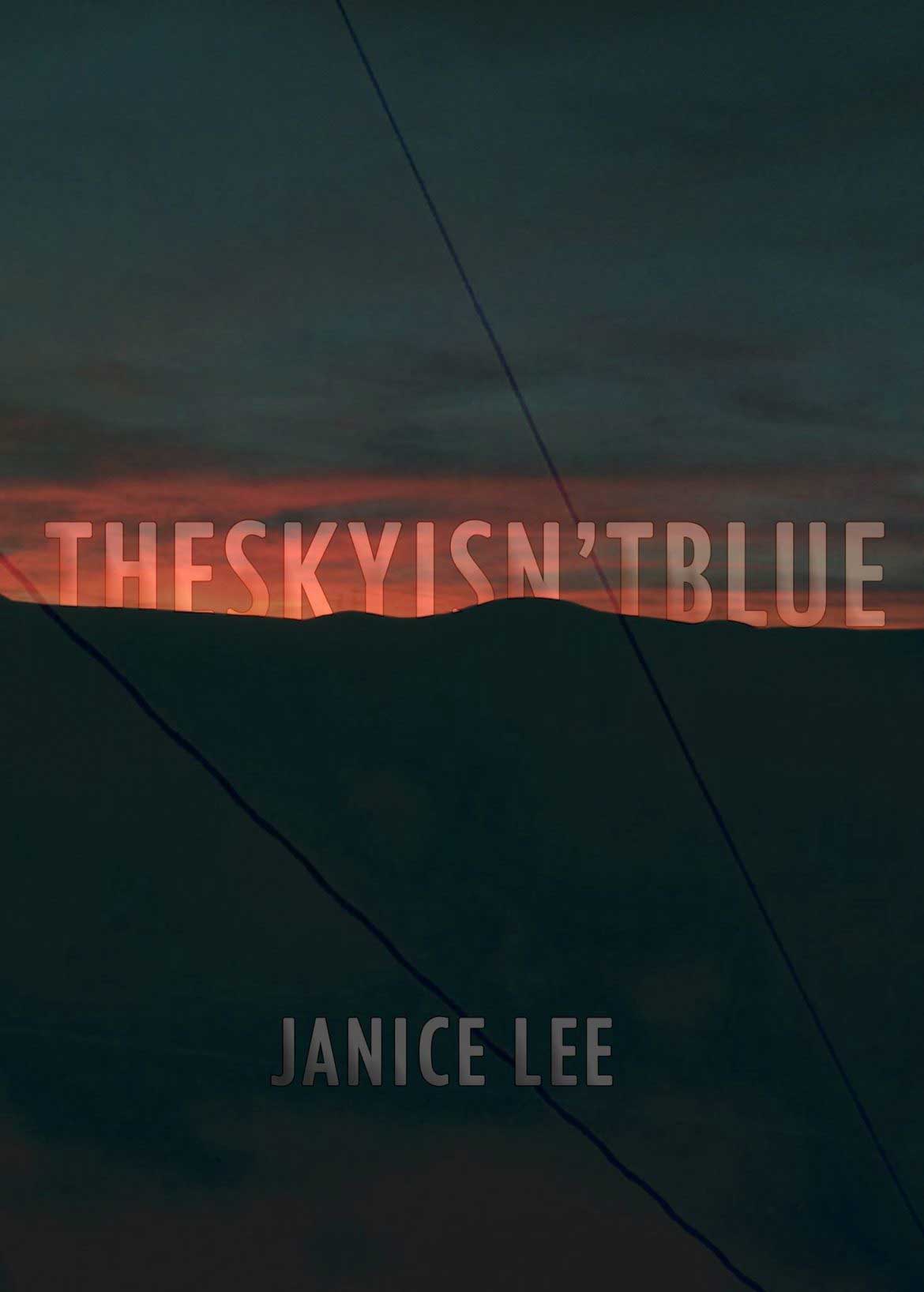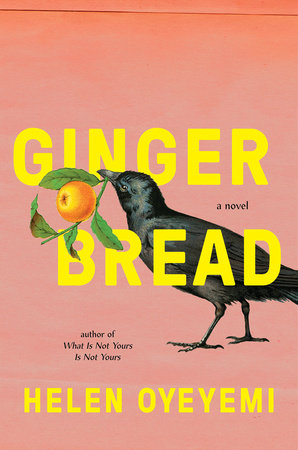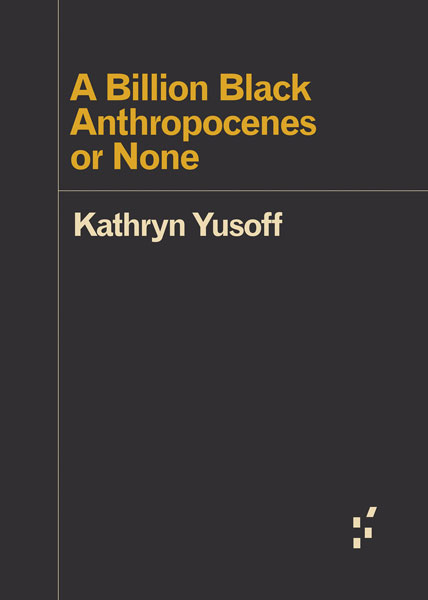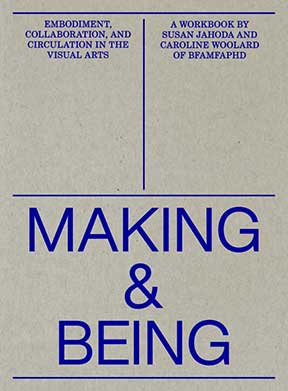DISSOLVE
BY SHERWIN BITSUI
Dissolve builds image upon image in an almost filmic intensity. What first feels like a cinematic and almost other-worldly landscape comes into focus as our own world shown anew. The lens of the poem refutes linear notions of time in favor of a deep time where present fuses with a long and continuous past. Bitsui also disrupts the subject-verb-object relational structure of colonial mastery inherent in the English language to makes space for the personhood of non-human animals, plants, lakes mountains, moonlight, etc. As in Bitsui’s previous books, these are poems that I return to, poems that fundamentally shape the way I see and inhabit the world.
THE SKY ISN’T BLUE
BY JANICE LEE
Every year I sneak one book of not-poetry into my poetry workshop syllabus—past classes included Fred Moten and Stefano Harney’s The Undercommons, Anna Tsing’s The Mushroom at the End of the World, and Selah Saterstrom’s Ideal Suggestions. This year we’re reading Janice Lee’s gorgeous collection of essays, which really is its own sort of poetry despite the essay designation on the back cover. The Sky Isn’t Blue offers insight into the very nature of perception and observation. The themes of longing, connection, and loss play out in various permutations throughout the book, through remarks on color, episodes of Agents of Shield, and interactions with human and non-human persons. Including in the following passage in which Lee contemplates Emil Nolde’s “Blue Sea”: “I think about urgency, about blueness, about the devastation and urgent desire of living. To live is to desire, to be devastated, to love, to be destroyed by all in the end.” This collection is filled with striking insight, emotional resonance, and generosity.
GINGERBREAD
BY HELEN OYEYEMI
Talking dolls fused with living plants, a changeling bestie, mysterious home countries that may or may not exist, and many gingerbread-fueled journeys and transformations. I loved getting lost in the world of this novel. Moreover, this getting lost seems at the heart of Oyeyemi’s exploration of capitalistic exploitation, matriarchical lineages, and what it means to find home. Disorienting plot-turns, time-shifts, and location changes make for a book that certainly requires careful attention, and Oyeyemi’s gorgeous sentences and emotionally rich characters make for a fully captivating and immersive experience.
A BILLION BLACK ANTHROPOCENES OR NONE
BY KATHRYN YUSOFF
Essential reading, especially for those working with the term Anthropocene. From Yusoff’s introduction:
“If the Anthropocene proclaims a sudden concern with the exposures of environmental harm to white liberal communities, it does so in the wake of histories in which these harms have been knowingly exported to black and brown communities under the rubric of civilization, progress, modernization, and capitalism. The Anthropocene might seem to offer a dystopic future that laments the end of the world, but imperialism and ongoing (settler) colonialisms have been ending worlds for as long as they have been in existence.”
The book not only examines the obfuscation of these histories, but the ways in which the very language of geology is based in the extractive economies of colonialism and slavery.
MAKING; BEING: A GUIDE TO EMBODIMENT, COLLABORATION, AND CIRCULATION IN THE VISUAL ARTS
BY SUSAN JAHODA AND CAROLINE WOOLARD
My pedagogical orientation in creative writing workshops veers towards generation, rather than critique, and towards helping students develop their own practice as a way to think about and engage with the world. Unfortunately, many creative writing pedagogical approaches and texts focus on issues of craft as taught through a series of formulas. One of my good friends who teaches in the visual arts posted an exercise from Making & Being on Instagram, and I was intrigued enough to download the pdf preview (the full book will be released later this fall). What I found was a series of exercises, practices, and a larger methodology that have helped to transform my poetry workshop by empowering my students to connect their own writing practices to their greater aspirations to create change in the world.
My hope is that my students will see their reading and writing practices as an opening to, as adrienne maree brown writes in Emergent Strategy, “intentionally change how we live in ways that grow our capacity to embody the just and liberated worlds we long for.” As described by the authors, the pedagogies of the book “are committed to are action-oriented, contemplative, community and place-based, critical, co-created, socially just, and somatic.” I recommend this book to anyone teaching in the studio or workshop framework—or anyone looking to support students in constructing their own liberatory practices.
